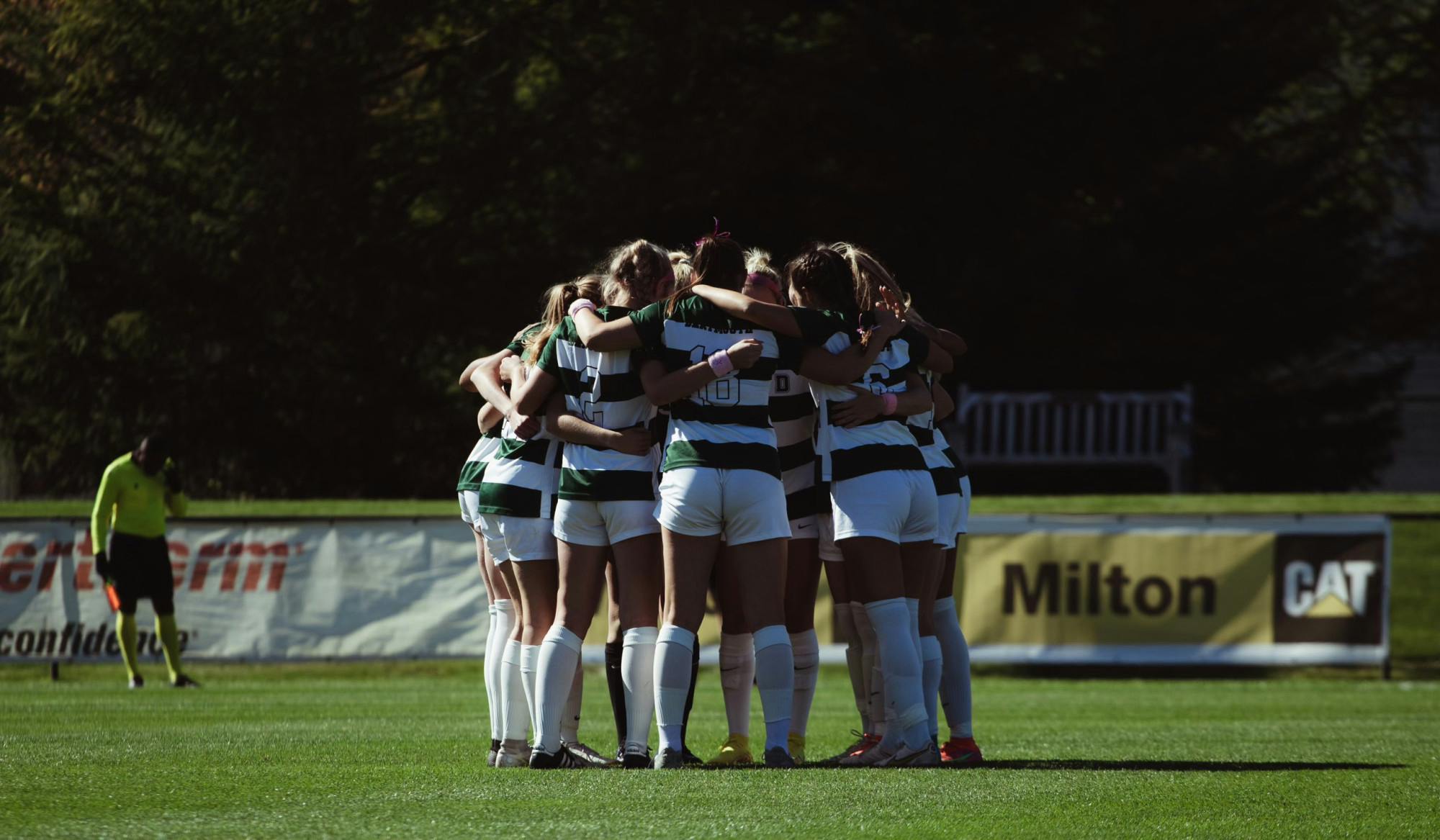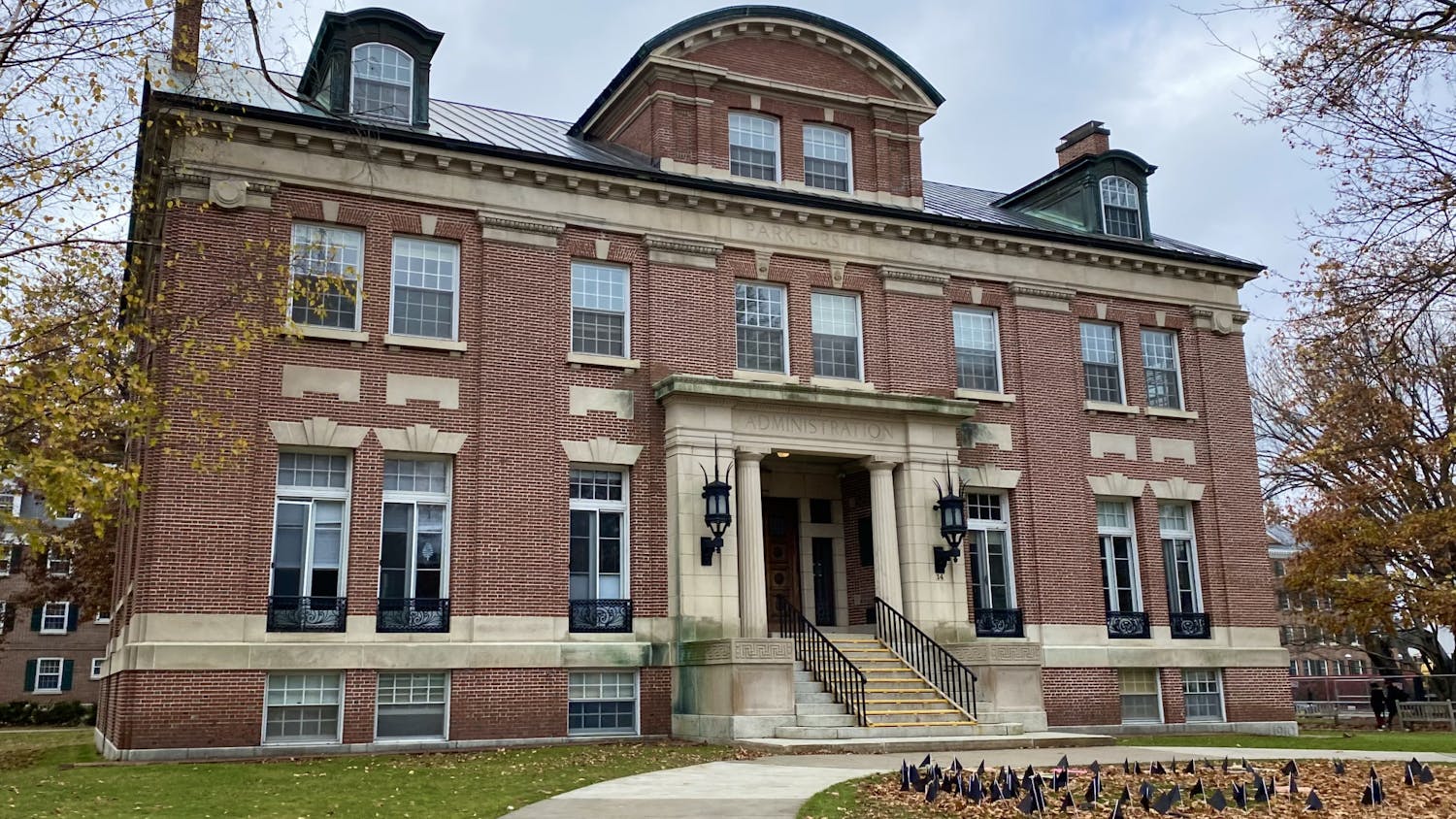You walk into Foco for dinner and look for a place to sit. On dark side, you see the members of the football team sitting at the tables near the drink station. On light side, you see the men’s hockey team at a long table and hear them discussing how the Toronto Maple Leafs will choke in the playoffs again. Throughout Foco, you struggle to find room to squeeze in among the various clusters of black, Dartmouth varsity athletics parkas. Though Dartmouth emphasizes cultivating community, some say there is a divide between the social culture of athletes and “NARPs” — non-athletic regular people — on campus.
I’ve been on both sides of this divide. I was admitted to Dartmouth as a non-athlete but walked on to the rugby team last fall, during my first term on campus. Speaking from personal experience, the heterogeneity between varsity athletes and NARPs definitely exists. Yet, some students suggest this separation is not enforced, but rather circumstantial.
“I would say there is a lot of self-segregation for sports teams,” non-athlete Matthew Kim ’26 said. “It’s 100% understandable. Athletes understand each other better than non-athletes would because sports are an additional layer to the college experience.”
Most varsity teams train together for upwards of 30 hours per week. Because of the enforced proximity and the demands of training, athletes naturally bond with their teammates. This consistent interaction results in patterns of convenience, such as eating as a team after practice or planning study sessions around training.
Adrien Jacobs ’27, a walk-on to the track and field team, finds that most athletes generally mingle with other athletes due to similarities.
“Most of the team sticks with each other and occasionally hangs out with a friend or two,” he said. “Sports introduce different social spheres, so athletes typically attract other athletes due to similar interests.”
By social spheres, Jacobs is referring to the different subcultures that emerge from interacting with students with comparable interests. For example, campus a cappella and its associated formals, concerts, practices and inside jokes could be considered a social sphere. Varsity athletes exist within a similar social subculture, and this shared sphere makes it easy for athletes to bond across teams.
This mutual understanding amongst athletes is not the only root of the athlete-NARP social divide. Athletes’ intellectual capabilities are often dismissed or doubted by non-athletes, and athletes are often the punchline of many “layup” jokes. For example, after joining the rugby team, one of my peers told me that I did not “speak like an athlete.” A few weeks later, a different peer asked me if I would now start slacking off in my classes.
“Many people think that athletes are drawn to easy classes because that’s all they can manage,” Jacobs said. “If you see athletes [in a class], don’t automatically assume it’s an easy class because oftentimes they just want to take classes with their friends or are trying to fill distributive requirements like everyone else.”
Lauren Messier ’25 of the women’s ice hockey team hypothesized that the stereotype of athletes only being able to handle layups arises from athletes’ in-season academic advising plans.
“In season, they want you to take a lighter course load, so maybe one hard class and two easy-to-moderate ones,” Messier said. “In the off-season, we take at least two hard classes because there’s more time on our hands.”
Balance is crucial for students on both sides of the athletic meridian. Athletes and NARPs alike often speak to upperclassmen friends about which courses to avoid, how effective certain professors are and which classes are layups. Still, preconceptions and jokes about athletes continue to circulate.
“I’ve definitely heard comments before, but you just have to brush them off,” Messier said. “We’re in the same classes and get the same grades, and I don’t have as much time on my hands.”
Non-athlete Chloe Hawkes ’27 mentioned that she hears disapproving comments about athletes on occasion, but she believes there is not a lot of truth to them.
“Sometimes I hear friends complaining about getting paired with an athlete for a group project, but I feel that everyone in my classes is well-spoken, athlete or NARP,” Hawkes said.
Varsity sport participation — or lack thereof — is also not a prerequisite for friendship at Dartmouth. Though there is some clear dissonance between athletes and NARPs on campus, many friend groups are intermixed. Men’s football and rugby player Tevita Moimoi ’24 shared that one of his closest friends is a non-athlete, and two of Hawkes’s closest friends are varsity athletes. Though proximity may encourage friendships amongst teammates, there is no evidence of NARPs consistently shunning athletes or vice versa. In fact, Moimoi claims he has not experienced negative treatment related to his athletic status.
“I haven’t felt a lot of separation from professors or students, and it’s unfortunate that some people might not have the same experience,” Moimoi said.
Kim and Hawkes mentioned that athletic status is not something they typically consider when interacting with classmates or forming friendships.
“I feel like I wouldn’t even know if people in my classes were athletes if I didn’t see their backpacks that said their sport on them,” Hawkes said.
Though some portion of the athlete stereotype might be rooted in truth, the majority of athletes on campus are dedicated to both their academic and athletic development. The broad generalizations about athletic culture fail to consider the ways each student sub-group contributes to shaping Dartmouth’s culture and sense of belonging.
When I was in the try-out process for rugby, I recall one of my now-teammates telling me that time passes by anyhow, and rugby was simply one way to fill my schedule. However, she failed to mention how joining the team led to my immediate adoption into a subculture — whether that meant the head nods I now receive from other athletes as I’m crossing the Green, or the people I wouldn’t have met had I remained a NARP. The time will pass by anyhow, but I believe those small encounters with the athletic community have helped it pass a little more sweetly.




